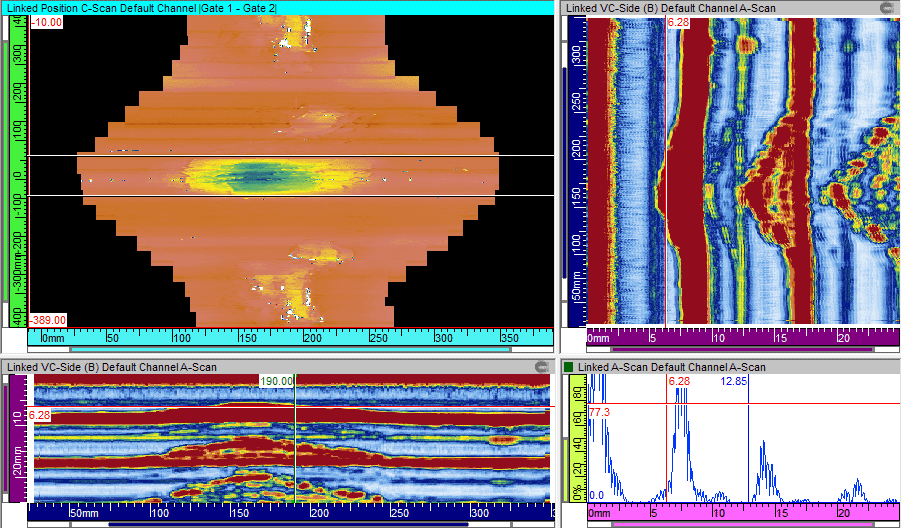C-Scans in Ultrasonic Testing: The Importance of Clear Visualization in Analysis

When it comes to the effective visualization of ultrasonic testing results, C-scan is one of the most reliable and widely used mapping method. C-scan uses a projection of the ultrasonic data onto a plan view of the component being tested to create an image. This mapping technique is usually utilized for corrosion or thickness mapping, as well as visualization of cracks and inclusions in the component. With the visualization ability, industries can greatly enhance the speed and accuracy of ultrasonic methods for their non-destructive testing (NDT) applications.
C-Scan Ultrasonic Visualization Mechanism
Ultrasonic NDT is a highly effective testing mechanism for corrosion mapping and flaw detection. The transducer emits ultrasonic pulses and analyzes the signal transmitted back for the inspection of the component. There can be many formats for collecting and displaying the ultrasonic test data such as A-scan, B-scan, and C-scan. While other mechanisms present the most basic 2D grid plot of the ultrasonic wave, C-scan ultrasonic testing displays the data alongside the depth (time-of-flight) or amplitude of the wave. This data, presented in high resolution and with different color patterns, enhances the accuracy of flaw detection in the component.
Flaw detection with C-scan ultrasonic testing can be depth- or amplitude-based.
Amplitude-based C-scan: This method allows for the inspection of the behavior of the material. Backwall echo monitoring can help in the detection of anomalies by observing the drop or change in the amplitude reflected from the back wall. Similarly, amplitude scanning can also help in the detection of spots with weak bonding resulting from the fusion of two different materials.
Depth-based C-scan: This process monitors the thickness of the inspection object. This helps in corrosion mapping by determining the change in thickness of the component. Inspection of the material thickness also helps in locating the precise position of flaws, inclusion, or porosity.
Advanced phased array ultrasonic testing (PAUT) probes, scanners, and software help in efficient and accurate visualization for flaw detection.
Visualization Improves Efficiency in Defect Detection
The mapping and visualization techniques such as C-scan in ultrasonic testing are very useful not only in terms of anomaly detection but also in terms of improving the process efficiency. Clear visualization allows for:
- Accurate positioning and intensity of flaws that cannot be detected with a normal visual inspection.
- Identify types and patterns of flaws in a wide range of materials with different properties.
- Determine multiple flaws through mapping in a single run.
- Eliminate discrepancies resulting from errors in the inspection.
The ability to monitor and visualize the flaws at the volumetric level allows industries to reduce inspection and analysis time. Industries like oil and gas, as well as aerospace, can benefit from these inspections to improve the quality and cost-efficiency of their products. Industries are inclining towards C-scan phased array ultrasonic testing for further inspection enhancement with the use of multiple transducers for speed and optimizable steer and control for accuracy.
C-Scan Ultrasonic Testing for Enhanced Analysis
In NDT inspection, reliance on manual inspection or data records alone can create false alarms. Processes such as C-scan mapping with its visualizing capabilities can eliminate this issue and enhance the accuracy of inspection. The enhanced precision and speed greatly enhance the efficiency of ultrasonic technology in NDT. With advanced PAUT probes, scanners, and software, industries can reduce their downtime and increase productivity while enhancing the quality of their components.
Zetec is a leading company that provides manufacturers with C-scan ultrasonic testing solutions for corrosion detection and visualization. Contact us today to get a custom inspection plan and additional guidance for your NDT needs.
